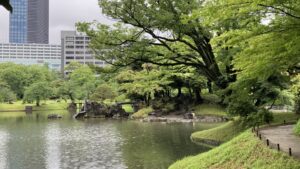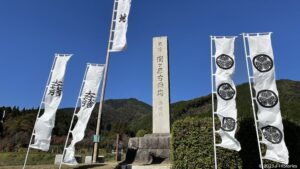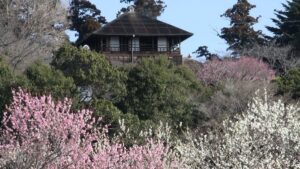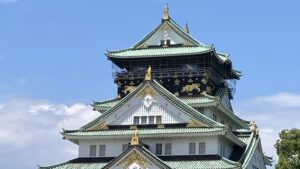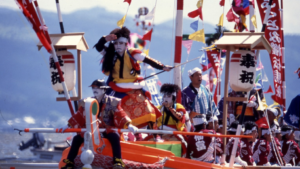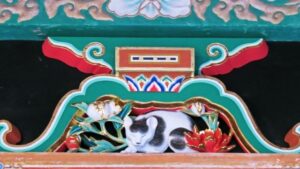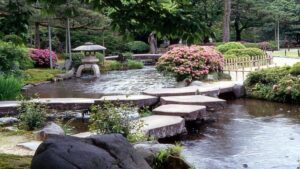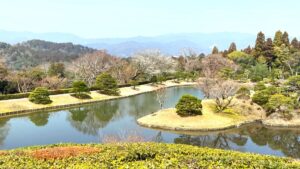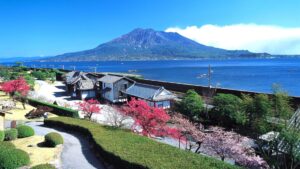Koisihikawa Korakuen, A Tranquil Oasis in Tokyo
Koishikawa Korakuen Garden is designed to resemble the scenery you would see on a journey from Edo to Kyoto. It includes a path through the Kiso region, a large pond modelled on Lake Biwa, the Ooi River, and Togetsukyo Bridge in Kyoto, and the mountain and rural scenery of the area around Kannondo Hall of […]
The Battle of Sekigahara
On 21 October 1600 (15 September 1600 in the Keicho era), the Battle of Sekigahara, the largest battle in Japanese history, was fought mainly in the Sekigahara area. The Eastern Army, led by Tokugawa Ieyasu (1543-1616, 徳川家康), about 70,000 to 80,000 soldiers, some of whom were loyal to Toyotomi Hideyoshi (1537-1598, 豊臣秀吉), clashed with the […]
Kairakuen Garden, Three Thousand Plum Trees is Breathtaking
Kairakuen Garden Park is located in Mito city in Ibaraki Prefecture about one hour train journey from Tokyo to the east. It is one of the finest three parks in Japan, following Kenrokuen in Kanazawa and Korakuen in Okayama. In early spring, the light pink, red, and white colors of over one hundred different plum […]
Siege of Osaka: The Last of Toyotomi & Begining of Tokugawa Era
Toyotomi Hideyori, A Wise Man In 1598, Toyotomi Hideyoshi (1536-1598, 豊臣秀吉), who had risen from a peasant to become the ruler of Japan as regent, passed away, leaving behind his five-year-old son, Hideyori (1593-1615, 豊臣秀頼). In 1600, the Battle of Sekigahara broke out between Ishida Mitsunari (1560-1600, 石田三成), a loyal vassal of the Toyotomi, and […]
Matsue Castle, Festival, and Tea Culture by Two Great Matsue Lords
Amid the chants of Horan Enya, around 100 boats, adorned with performers wearing colorfu,l splendid costumes, sail through rivers between Lake Shinji and Nakaumi Lagoon in Matsue, the capital of Shimane prefecture. The Horan-Enya Festival is one of three major Shinto boat rituals in Japan, alongside the Tenjin Festival of Osaka Tenmangu Shrine and the […]
Nikko Toshogu Shrine, Seeking a Peaceful World Even After Death
Nikko Toshogu Shrine enshrines the spirit of Tokugawa Ieyasu, who laid the foundation for a peaceful era that lasted for 260 years. After settling the turbulent era, Ieyasu's ambition was to secure lasting prosperity and national peace. He faced many adversities in his life: fourteen-year hostage and Ikko-riot of the Jodo Shinsu sect of Buddhism […]
Kenrokuen, a Scenic Garden, the Maeda Clan's Survival Strategy
Kenrokuen garden in Kanazawa is a symbol of Maeda Toshiie, Toshinaga, and Toshitsune, the great lords who protected Kaga's one million koku domain against the Tokugawa Shogunate. Thier strategy was brilliant.
Shugakuin Imperial Villa: Emperor Gomiziunoo's Villa Life
Shugakuin Imperial Villa is surrounded by a courtly atmosphere, and its beauty is beyond description. This magnificent villa was built by the 108th Emperor Gomizunoo (1596-1680, 後水尾天皇) after his abdication. Emperor Gomizunoo ascended to the throne at a young age as the Tokugawa Shogunate consolidated its solid political system in pursuit of a centralized feudal […]
Kyoto Imperial Palace, Successive Emperor's Residence
The Heian-kyo had been the center of the nation where the successive emperors resided for over 1200 years since the capital relocation from Nara in 794 by the 50th Emperor Kanmu until 1869 when Emperor Meiji moved to Tokyo, one year after the Meiji Restoration. The highlight is the beautiful Shishinden Hall with its cypress […]
Shoko Shuseikan, The Wise Lord Shimazu Nariakira Seeded a Modern Nation
Shoko Shuseikan Museum, registered as one of "Japan’s Meiji Industrial Revolution, encompassing Iron and Steel, Shipbuilding, and Coal Mining," is a group of factories established in 1851 by Shimazu Nariakira (1809-1858, 島津斉彬), the 28th head of the Shimazu clan and the lord of Satsuma domain. With the threat of Western powers expanding into Asia becoming […]

